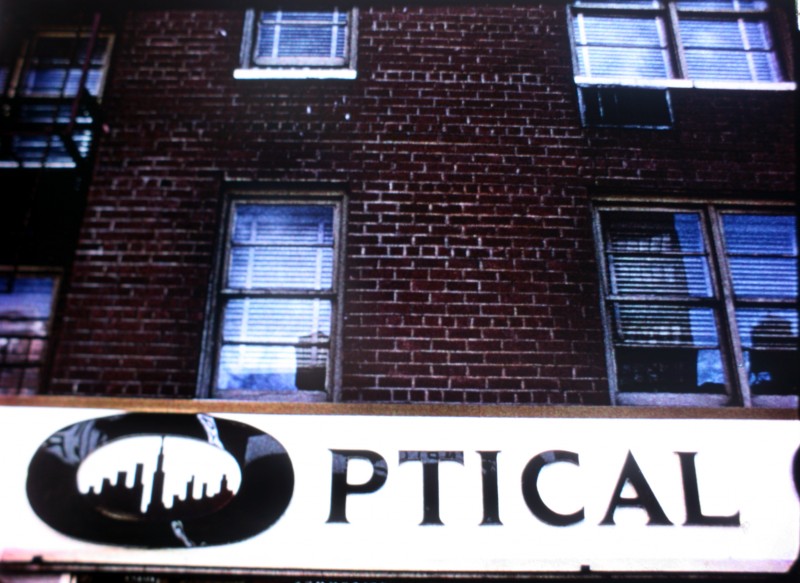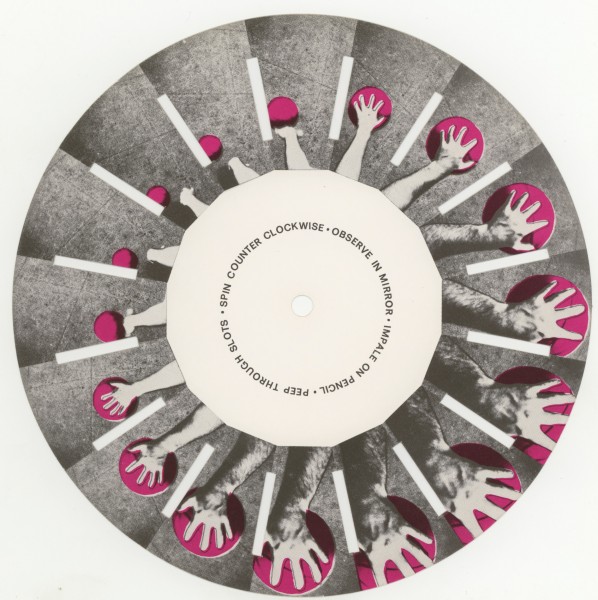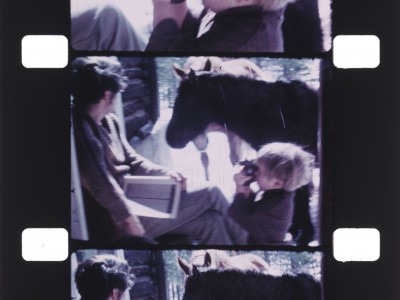
If we are indeed doomed to the comically convergent task of dismantling the universe, and fabricating from its stuff an artifact called The Universe, it is reasonable to suppose that such an artifact will resemble the vaults of an endless film archive built to house, in eternal cold storage, the infinite film.
Considered one of the most brilliant artist-thinkers of the modern American avant-garde, Hollis Frampton (1936-1984) is best known as a structuralist filmmaker, though he was also at various times a poet, photographer, essayist and film theorist, later working in video and "computer-generated, -controlled & -processed image, sound & text" which included designing programs at the dawn of the computer age.
The son of an Ohio coal-miner, Frampton had an adult library card by age five, started studying art at ten, and at fifteen, the precocious student applied to and was accepted at Phillips Academy in Andover on a full scholarship, a nascent polymath whose studies—and friendships with classmates Frank Stella and Carl Andre—foretold his future place in the vibrant New York City art scene of the 1960s. After Andover, Frampton attended Western Reserve University where he excelled yet essentially refused to receive a degree because it would require he take subjects he considered irrelevant. Instead, he began a correspondence with Ezra Pound and moved to Washington, D.C. to study with the poet. In 1958, Frampton relocated to New York and began a career as a freelance art photographer while working as a photo lab technician.
I didn't want to announce or to give out as something that I had done, something that showed the direct signature, the imprint of my having without mediation manipulated it. I liked to do things with machines so I took up still photography, which seemed to offer that advantage, that of mediation, that of signaturelessness, of a a certain kind at least. The signature was in such things as framing and tonal scalings, abstractions as imperceptible as the infinitely thin clean line. So that one was not, as it were, the person hovering behind the artifact but rather behind the thing that made the artifact. And on the other hand, one did not have to laboriously build up this image. It was not made serially but came forward as a kind of matrix of thought instantaneously, in a manner that criticised the maker...
As a photographer, his "predicament was that of a committed illusionist in an environment that was officially dedicated to the eradication of illusion and, of course, utterly dominated by painting and sculpture.” The multivalent and time-based aspects of motion pictures suited Frampton's vast matrix of interests—language, literature, science and math among them. By the late 60s, he was making and exhibiting films on a regular basis—including the formalist classics Surface Tension (1968), Lemon (1969), Zorns Lemma (1970), Critical Mass (1971) and (nostalgia) (1971). The latter two were part of his seven-part Hapax Legomena series, films which could be watched separately or seen together as one whole piece. Though some take deceptively simple, playful form, Frampton's films generally require a degree of active, intellectual work from the viewer. "As soon as one does make the commitment," Scott MacDonald notes in a 1978 Afterimage article, "the best of Frampton's films become not only stimulating and enlightening, but extremely enjoyable."
In 1973, he joined the faculty at SUNY Buffalo, where he helped develop the illustrious Center for Media Study—shortly joined by fellow pioneers in the arts Tony Conrad, Woody and Steina Vasulka, James Blue, Paul Sharits and Peter Weibel. Throughout the 1970s Frampton also wrote for Artforum and October; many of these articles are collected in his seminal book Circles of Confusion: Film, Photography, Video – Texts 1968 – 1980. Cinematically, Frampton spent most of the decade and thereafter concentrated on his calendrical film cycle, Magellan, intended to be over thirty-six hours long, yet remained incomplete at the time of his death. In his later years, Frampton also created xerographic and photographic works and pursued his interest in computer science, founding with Woody Vasulka a Digital Arts Lab at the university, the first of its kind in the country.
About the Collection
In 2003, photographer Marion Faller, with whom Frampton worked and lived the last thirteen years of his life, donated significant material to the Harvard Film Archive. The holdings contain a variety of media such as original art in the form of Frampton’s photographic and xerographic images; papers that include letters written to Frampton and material corresponding to exhibitions of his work; videotapes with footage of and about Frampton; and the largest collection of Frampton's audio material. Highlights of the over one-hundred audio items— most of which are unique—include Michael Snow’s reading of A Lecture; recordings from Frampton’s semester-long SUNY Buffalo seminar on the films of Stan Brakhage, including interviews with and lectures by Brakhage; Frampton speaking at screenings of his work, such as a 1972 discussion of Palindrome in Annette Michelson’s NYU classroom; and music produced by Frampton.
A finding aid for the Hollis Frampton Collection can be found here.
All inquiries regarding the copyright or use of films, artwork or writings by Hollis Frampton should be directed to Will Faller, head of the Frampton Estate.
Twenty-four of Hollis Frampton's films in addition to other art works are compiled on the Criterion relesase, A Hollis Frampton Odysesy.
Additional Resources
Hollis Frampton Interviewed by Esther Harriott, SUNY Buffalo, 1978
Hollis Frampton CV ca.1982
Hollis Frampton: (nostalgia) by Rachel Moore, Afterall Books, 2006
On the Camera Arts and Consecutive Matters: The Writings of Hollis Frampton, ed. Bruce Jenkins, MIT Press, 2009
"The Infinite Hollis Frampton" by Bruce Adams, AtBuffalo, Summer 2015











